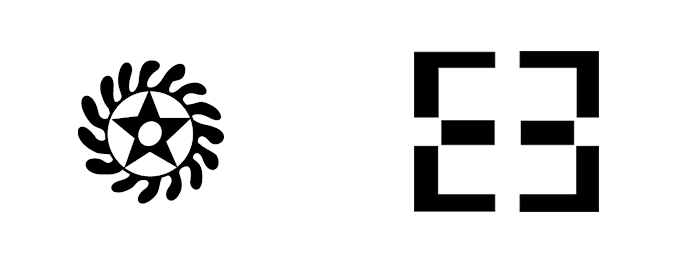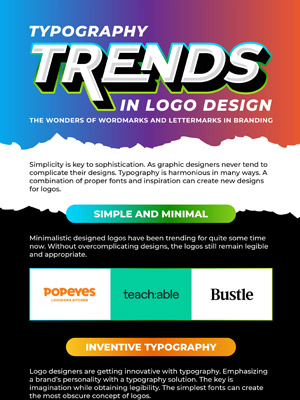Design Sensitivity: Understanding The Cultural Palette
When graphic designers choose colors for their designs they are usually led by personal preferences, color palette combinations, industry or client selections. However, what they tend to ignore is the cultural significance of color. The idea of a cultural palette of color was set forth by students Sandra E. Moriarty and Lisa Rohe, who wrote a thesis on “Cultural Palettes: An Exercise in Sensitivity for Designers.”
The idea proposed in the thesis was to create a palette of color combinations that helped show sensitivity towards different cultures, basically a way to communicate cross-culturally in a visual manner. The students created the palette by researching cultural and sub-cultural images in various regions and then evaluating those by creating a cross-cultural comparison to create a universal vision.
It may prove difficult but in a global business community designers have to start thinking more in terms of international clients. They have to learn to identify the client preferences even before they draft the first design. Ask yourself how many times have you, as a designer been stumped when you create something magnificent and have the client say, “Um…there is something wrong with the color…”
Marketers are struggling to adapt their campaigns to a more global environment, businessmen are trying to gain more knowledge of business communication in different cultures so it makes sense that graphic designers too, create designs that appeal to a global audience.
Below given are some of the various categories of color and addresses symbolism in graphic design that designers have to keep in mind when creating designs for clients of different regions.
• Clients from South America and Latin America
People from Latin America and some regions of South America usually prefer traditional symbols and subtle references to religion. These may be inappropriate in industries like finance and accounts but designers can then use relevant colors like blue and white which is the color associated with the Virgin Mary statues. The association will be obvious and acceptable.
Other colors of appeal to people of this region are red, yellow and orange. However, the applicable shades of yellow have to be found (leaning more towards orange) as yellow also represents mourning in the continent.
Shades of gold would be consistently accepted as they are more universal. Most people from these regions do not find fluorescent colors fitting and pastels like turquoise, sand and mauve also seem to be disapproved.
• Clients from Eastern Regions like Asia:
This region is also quite traditional and influenced by religion especially in India, Bangladesh, and Pakistan. The Indians prefer the rangoli pattern which is the image of the sun god and can be used in a more abstract manner and made modern. The Nandi textile pattern which features a mango leaf design and the word OM are also popular. Again designers can get creative when using these symbols. There are tens of gods that can be used subtly in logos and other smaller symbols like the conch, the rose, the lotus flower, and even a small diya or lamp (think Aladdin’s magic lamp.)
However, while clients from Pakistan would lean towards the crescent moon symbol the Indian counterparts would not appreciate it. Most would consider the cat and the owl inauspicious in that region.
Colors clients of this region prefer are dark yellows and orange shades as well as dark greens and reds. White and black can be complementary shades but standing alone they should be avoided for these clients. Russians connect red with communism and yet, it remains a popular choice while South East Asian regions like China, Korea and Japan to name a few, prefer the more exotic symbolization of the animals like dragons, tigers, hawks and phoenix. The cat seems to be an animal most Asians avoid so no depicting the little feline though others in the cat family will be popular. The colors of preference remain red, blue, deep yellow and orange while black, grey and pink should be avoided.
• Clients from Europe, North America and Australia
The West is considered to be the developed world and hence less prone to superstitions and less concerned with religious emblems. Some traditional notions may continue to prevail but most color choices tend to be psychologically and culturally rendered.
The clients are more sophisticated in color combinations and also more willing to experiment. That means if the designer comes up with a crazy color combination they will be open to the idea. Some color shades work better for specific industries like blue and grey for the financial institutes and warmer shades for the real estate industry.
The entertainment industry goes against the norm and uses deeper shades like black and then even neon hues that mark their ‘trendiness’. Symbols are then more generic unless associated with religious organizations or product oriented services e.g. a church would have a cross, and a synagogue the menorah.
• Clients for the Middle East and Mediterranean Regions
The Middle Eastern and Mediterranean states are mysterious and considered changelings in the world as they are hard to predict. The Middle-East is more rigid in its Islamic culture while the Mediterranean clients can be much more diverse and rich in terms of their choices.
For this ancient region there are many symbols that can be used which, may have been forgotten but remain a source of pride for them. The imagery of the magic lamp is a universal and comes from a shared sense glory.
The nazar boncuk is the symbolization of the evil eye and is said to represent the amulet that wards off the power of the jealous that can bring misfortune. Definitely something that can be alluded to in any design. The colors that work for this sort of symbolization are white and blue which are supposed to have (Turkish reference) life giving properties.
Egypt cherishes the eye of Ra or Utchat (Udjat) another sacred eye symbol. It is an abstract rendering with the Eye of Ra (right) symbolizing the sun and the Eye of Thoth (left) which symbolizes the moon together creating the Two Eyes of Horus (the Elder). This can even be considered for medical logos as the prescription symbol Rx is a derivate of this sign!
Other symbols include the phoenix, lotus, shamrock, sphinx and Ziggurat (mountain of heaven –works well for finance logos) to name a few. The colors appropriate to the region can be hues of blue, white, red and green and purple. Other hues can work well in coordination with complimentary and contrasting colors.
• Clients from Africa
Considered to be the most primitive of regions Africa remains the least explored. The region may be less travelled but its symbolizations are unique and very effective for graphic designers. Their abstract concepts and lines are perfect for today’s minimalist trends.
Consider the symbol of the Adinkra popular in West Africa. It is visually stunning and represents wisdom and the various aspects of life. The Sankofa means learning from the past and is a combination of lines and elaborate curves. The Seesa Who Suban is said to be representative of change and transformation and would work well for the communication and media industries. For the clients in the non-profit industries a play on the symbol of Woforo Dua Pa a, which is suggestive of collaboration would be fitting.

Primary colors are popular as are the deeper shades like red, yellow, green, black, blue and gold. The flags of the African nations reflect this preference and can be seen to be mostly chosen from the deeper shades.
• Global Branding and Client Culture
To create a global brand for clients, graphic designers must communicate with visuals in terms of colors and symbols. The phrase ‘a picture is worth a thousand words’ may now be a cliché but it remains true. There are always natural associations with shapes, symbols and colors and if a designer takes the time to get educated in terms of the client’s culture it will be easier to bridge the differences and create a unique and universal color palette in terms of design. One that communicates success.
Share This:
Embed this Infographic on your site using the html below:
If you enjoyed our Infographic, please consider sharing it using the buttons below!



